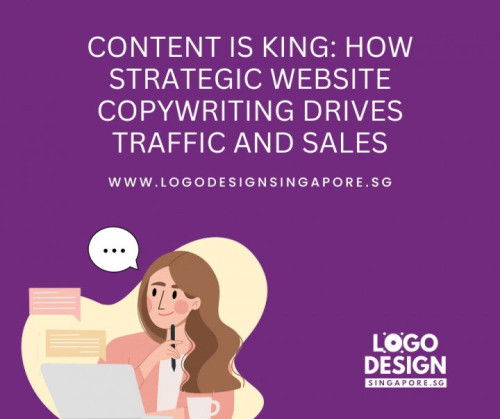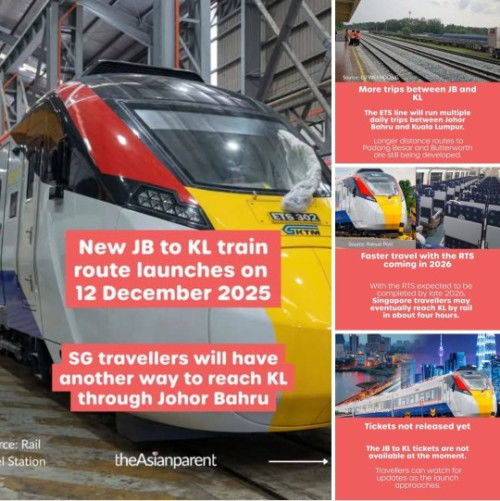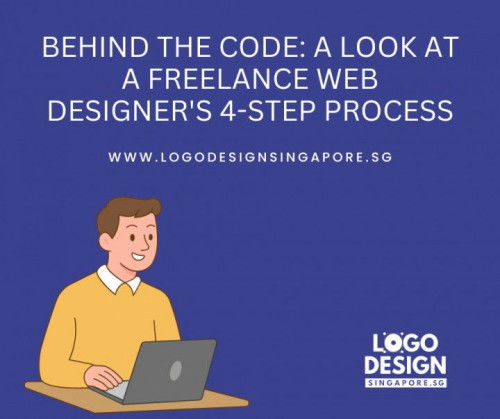
Retro and Vintage Fonts: Bringing Nostalgia into Business Logo Design -Logo Design
One element that consistently leaves a lasting impression is typography. Among the vast ocean One element that consistently leaves a lasting impression is typography. Among the vast ocean of fonts available, retro and vintage styles have made a bold return — not just as a trend, but as a meaningful design choice in modern branding. These nostalgic fonts, with their charming imperfections and historical flair, are proving to be powerful tools in Business Logo Design. Retro and vintage fonts don’t merely echo the past; they invoke emotion, establish identity, and make businesses stand out in a saturated market. In this article, we’ll explore how these t imeless styles contribute to Business Logo Design, why they resonate with audiences, and how companies can leverage them for lasting visual impact. Understanding Retro and Vintage Typography Before diving into their role in logo design, it’s important to distinguish between “retro” and “vintage” fonts. Retro fonts typically refer to typefaces inspired by the aesthetics of the 1970s to early 1990s. Think bold, geometric, funky, and colorful. These fonts are often associated with pop culture, disco, arcade games, and early tech branding. Vintage fonts draw inspiration from earlier eras — generally from the 1880s to the 1960s. They tend to be ornate, classical, and hand-crafted in appearance, reflecting the artistry of sign painters, letterpress printers, and the industrial revolution. Both font types tap into the idea of memory and legacy, making them ideal choices for brands that want to evoke trust, heritage, or a particular cultural moment. The Psychology of Nostalgia in Business Logo Design Nostalgia is a powerful emotion. It reconnects us with feelings of comfort, safety, and simpler times. In marketing, nostalgia has long been used to create emotional ties between a brand and its audience. Retro and vintage fonts, when used strategically in Business Logo Design services in Singapore, tap into this psychological trigger. Whether it’s the bold slab serifs of old soda brands or the curved script of mid-century diners, these fonts communicate familiarity. Consumers are more likely to engage with a brand that reminds them of something they trust or remember fondly — even if they’re experiencing it for the first time. This emotional pull strengthens brand recognition and fosters long-term loyalty. In a world where consumers are bombarded with sterile, hyper-modern branding, the warmth of a nostalgic font offers a refreshing counterpoint. Why Retro and Vintage Fonts Work in Business Logo Design 1. Differentiation in a Crowded Market In industries where minimalist, sans-serif logos dominate, a retro or vintage font immediately sets a business apart. It signals that the brand is confident in its identity and is willing to embrace a unique visual voice. 2. Storytelling and Brand Identity Retro and vintage fonts add layers of meaning to a logo. A script font from the 1950s might suggest family values and craftsmanship, while a bold retro typeface might conjure fun, innovation, and creativity. This storytelling aspect helps brands communicate their ethos without saying a word. 3. Versatility and Timelessness Despite their association with the past, these fonts remain relevant due to their versatility. When combined with modern design principles — like clean layouts or contemporary color palettes — they strike a balance between old and new, making them adaptable to a wide range of businesses. Strategic Use of Nostalgic Fonts in Logos Using retro or vintage fonts in Logo Design isn’t about blindly selecting a decorative typeface. It’s about ensuring that the font aligns with the brand’s personality, target audience, and message. Here’s how to do it strategically: a. Define the Brand’s Core Message Before choosing a font style, it’s essential to understand the brand’s voice. Is it playful, serious, traditional, or quirky? The right nostalgic font should amplify this voice. b. Balance with Other Design Elements Typography should never work in isolation. Pairing a retro or vintage font with appropriate colors, layout, and supporting graphics ensures cohesion. For instance, a vintage font paired with modern iconography can create an innovative hybrid style. c. Ensure Readability No matter how visually engaging a font may be, if it compromises readability, it fails its primary purpose. Choose fonts that maintain legibility at various sizes, especially when scaled down for mobile or small-format printing. d. Use for the Right Business Types While retro and vintage fonts can work for any industry, they tend to excel in businesses that want to showcase authenticity, history, or a specific lifestyle — think food and beverage, fashion, artisanal products, creative agencies, or niche tech brands. Key Design Principles When Using Nostalgic Fonts When integrating retro or vintage fonts into Small Business Logo Design, keeping design fundamentals in mind ensures the final result is effective: Hierarchy: Make sure the font complements the overall layout and doesn’t overpower other elements. Consistency: If used with other fonts or design motifs, ensure they share the same aesthetic tone. Whitespace: Allow room around intricate or decorative fonts to avoid visual clutter. Contrast: Pair decorative fonts with simpler elements to maintain balance and draw attention to key parts of the logo. Challenges with Retro and Vintage Fonts While their appeal is strong, using retro or vintage fonts comes with a few challenges: Cliché Risks: Overuse or poor execution can make a design look gimmicky or outdated. Brand Confusion: If a retro font is used without alignment to brand strategy, it can send mixed messages to consumers. Licensing and Quality: Many vintage-style fonts are handcrafted and may require special licensing. Additionally, not all available fonts are optimized for digital use or high-resolution output. To mitigate these issues, it’s wise to work with professional designers who understand how to harmonize nostalgia with modern branding demands. The Future of Retro in Logo Design As businesses continue to seek meaningful ways to connect with their audiences, the use of nostalgic elements in branding is likely to grow. But rather than a full-scale return to old styles, what we’re witnessing is a fusion — a blending of retro inspiration with contemporary design sensibilities. This hybrid approach allows companies to enjoy the best of both worlds: the warmth and emotion of the past with the clarity and innovation of the present. Final Thoughts Retro and vintage fonts offer more than just aesthetic charm. They tell stories, stir emotions, and help brands stand out in a sea of sameness. In the world of Business Logo Design, they are invaluable tools for creating logos that are not only visually compelling but emotionally resonant. For brands looking to leave a lasting impression — one that feels both familiar and fresh — incorporating nostalgic typography into their business logo design is a smart, strategic move. Whether seeking to honor heritage, spark connection, or evoke a timeless spirit, these fonts provide the creative bridge between memory and modernity. When thoughtfully used, retro and vintage fonts do more than just look good — they make people feel something. And in branding, that feeling is everything. visits us : https://www.logodesignsingapore.sg/
Đọc thêm



Content is King: How Strategic Website Copywriting Drives Traffic and Sales — Logo Design Singapore
Businesses fight fiercely for online visibility, customer attention, and brand loyalty. Among all the elements that contribute to a successful online presence — design, functionality, branding, and marketing — one factor consistently stands out as the most powerful driver of results: content. The phrase “Content is King” is more than just a buzzword; it’s a truth that underscores how words, tone, and messaging can directly influence traffic, engagement, and sales. This article explores how strategic website copywriting becomes the backbone of digital success, why businesses should treat it as a cornerstone of their online strategy, and how it elevates every part of the customer journey. The Role of Website Copywriting in the Digital Era Website copywriting is more than putting words on a screen. It is the strategic use of language to communicate value, establish trust, and motivate users to take specific actions. Whether it is drawing in new visitors from search engines, nurturing their interest with persuasive messaging, or guiding them to conversion points, copywriting acts as the connective tissue between business goals and customer intent. The modern consumer no longer tolerates vague, generic messaging. They want clarity, transparency, and answers to their needs. Strategic website copywriting ensures that these expectations are not only met but exceeded, paving the way for stronger customer connections and repeat engagement. Why Content is the Foundation of Traffic Traffic is the lifeblood of any website. No matter how sleek the design or innovative the technology, without visitors, a site serves little purpose. Strategic copywriting fuels traffic in two critical ways: Search Engine Optimization (SEO) Search engines analyze web content to determine relevance and authority. Well-written, keyword-optimized copy signals to search engines that a website provides real value, improving its rankings. This boosts organic traffic — the most sustainable and cost-effective channel for attracting visitors. User-Centered Messaging When copy directly addresses the pain points and aspirations of potential customers, it resonates on a deeper level. This resonance keeps visitors on the site longer, reduces bounce rates, and creates signals of value for search algorithms. Without quality content, even the best optimization efforts or advertising campaigns will fall f lat. The ability of copywriting to blend technical SEO requirements with emotional resonance makes it indispensable. Converting Visitors into Customers Driving traffic is only half the battle. The ultimate goal of a website is to turn visitors into leads or customers. This is where copywriting demonstrates its true power. Strategic copywriting is designed with conversion in mind. It guides the reader on a carefully structured journey, from initial awareness to action. Clear headlines grab attention, concise yet persuasive body copy sustains interest, and compelling calls-to-action push readers toward decision-making. Well-crafted copy does not feel forced. Instead, it anticipates objections, addresses them with authority, and builds trust at every stage. This subtle persuasion turns casual browsers into loyal buyers. Content as a Brand Voice Amplifier Every business has a story to tell, a unique value proposition, and a vision for its audience. But without clear messaging, these elements remain hidden. Strategic website copywriting acts as the amplifier of brand voice, ensuring that every word reflects the identity of the company. Consistency in tone and language reinforces credibility. When users visit a site, they should instantly understand the personality of the brand — whether it is professional, approachable, innovative, or authoritative. A skilled website designer Singapore may create the visual framework, but copywriting breathes life into it, allowing the brand to engage customers on both a rational and emotional level. The Psychology Behind Words At the heart of copywriting lies psychology. Words trigger emotions, influence perceptions, and inspire actions. Strategic website copywriting draws on principles of human behavior to maximize impact. Clarity Reduces Friction: Visitors should instantly grasp what a business offers without confusion. Authority Builds Trust: Confident, factual language positions a brand as reliable and credible. Emotion Drives Action: Words that evoke excitement, relief, or security push readers to engage. By understanding how different audiences think and feel, copywriters craft content that aligns with user intent and subtly guides them toward desired outcomes. Enhancing User Experience Through Copy User experience (UX) is often associated with visuals and navigation, but copywriting plays a crucial role in shaping it. Clear, concise, and engaging content ensures that users find what they need without unnecessary effort. From homepage headlines to product descriptions and contact page prompts, every word contributes to the overall journey. Poorly structured or confusing content disrupts this journey, while strategic copywriting creates seamless pathways that make browsing intuitive and enjoyable. This synergy between UX and copywriting strengthens retention and boosts conversion rates. It ensures that every visitor not only stays longer but also leaves with a positive impression. The Sales Funnel Powered by Content Every website is essentially a digital sales funnel, guiding users from discovery to decision. Strategic copywriting ensures that each stage of the funnel is addressed with the right message: Awareness: Informative, keyword-optimized content introduces the brand to new visitors. Consideration: Persuasive messaging highlights benefits and builds trust. Decision: Strong calls-to-action encourage immediate steps such as signing up, purchasing, or contacting the business. By mapping copywriting to each stage of the funnel, businesses maximize their chances of conversion while delivering value at every interaction. Content as a Long-Term Asset Unlike paid advertising campaigns that disappear once budgets run out, strategic copywriting builds long-term value. High-quality content continues to attract visitors, generate leads, and influence purchasing decisions long after it is published. This compounding effect means that businesses investing in strong copywriting today are essentially planting seeds for future growth. Every blog post, landing page, and product description becomes part of a growing ecosystem that supports sustainable online success. Why Businesses Cannot Ignore Strategic Copywriting In today’s digital-first economy, ignoring content strategy is equivalent to ignoring customers. Strategic website copywriting does not simply fill space — it sets the foundation for visibility, trust, and conversions. Businesses that fail to prioritize it often struggle with: Low search engine rankings Poor engagement metrics High bounce rates Limited customer loyalty On the other hand, those that integrate copywriting into their core digital strategy enjoy measurable growth, stronger connections, and lasting competitive advantages. The Future of Website Copywriting As technology evolves, so does the role of content. AI-driven insights, personalization, and voice search optimization are shaping the future of website copywriting. Yet, the essence remains unchanged: words must resonate with humans first. No matter how sophisticated tools become, the emotional and psychological impact of well crafted copy will always set successful businesses apart. For this reason, companies must continue to treat content as their most valuable digital asset. The phrase “Content is King” endures because it captures a universal truth: without compelling, strategic messaging, no website can achieve its full potential. Design may catch the eye, functionality may impress, but it is content that convinces, converts, and creates lasting connections. Strategic website copywriting drives traffic by improving visibility and relevance while simultaneously turning that traffic into tangible results through persuasive, human-centered messaging. It shapes brand identity, enhances user experience, and builds long-term value that no other marketing investment can match. For businesses serious about digital growth, content cannot be treated as an afterthought. It must be viewed as the heart of the online strategy. The right words, placed in the right context, make all the difference between a website that simply exists and one that thrives. And while a skilled website designer Singapore may lay the foundation of digital presence, it is powerful content that rules as king — driving traffic, sales, and success. Pop over here : https://www.logodesignsingapore.sg/
Đọc thêm










